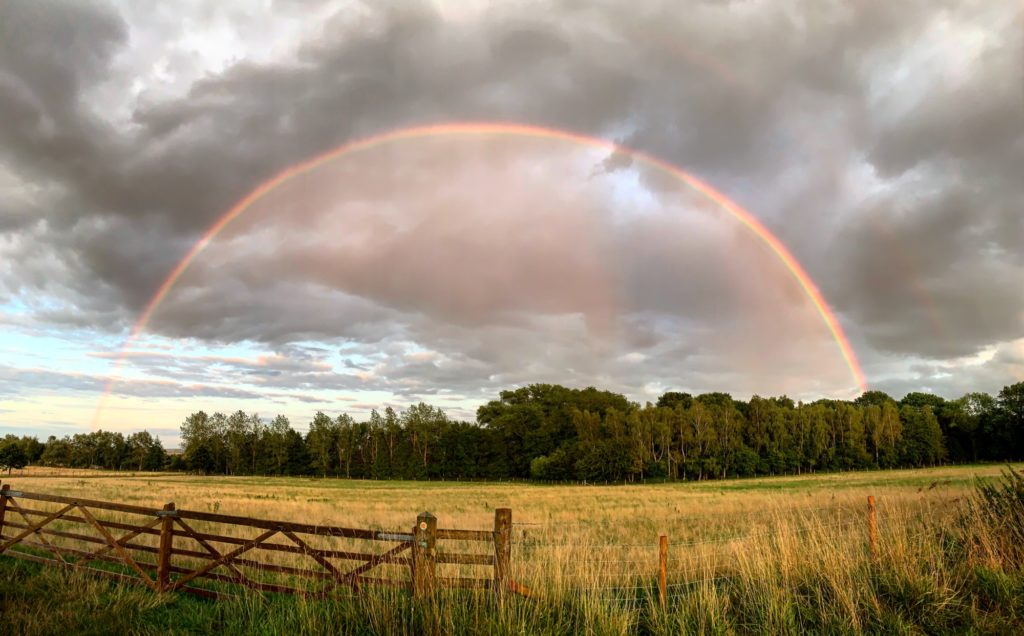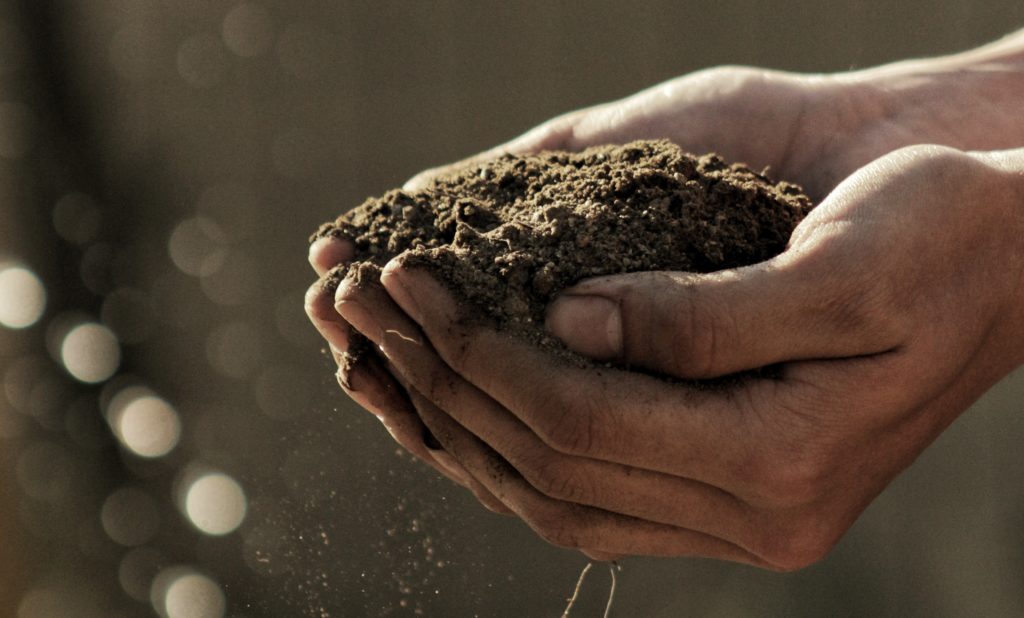Regenerative Agriculture: Connecting Farmers in the North Wessex Downs
Earlier this year Earth Trust hosted a series of workshops for farmers on regenerative agriculture – but what is it, and why are these events so important for the future of farming in the North Wessex Downs?
To find out more, we interviewed Katharine Cook, from the Farming in Protected Landscapes (FiPL) programme at North Wessex Downs Area of Outstanding Natural Beauty (AONB); Niels Corfield, England’s leading regenerative soil adviser; Paul Hill, Head of Farming & Environmental Land Management at Earth Trust; and Tristan Leslie, Ranger at Earth Trust.
Can you tell us more about regenerative agriculture – what does it involve?
Niels: It’s a decision-making framework that takes the essence of natural systems and tries to mimic that through agricultural management practices. In other words, trying to replicate the processes that make “natural systems” healthy and functional.
Paul: Yes, regenerative is a buzzword at the moment, but a lot of farmers were doing regenerative agriculture anyway because it incorporates so many aspects. Soil is probably the most fundamental one, but also it integrates with livestock, cropping, rotation, woodland… everything comes together. Regenerative agriculture is intelligent farming, and it refocuses our values on how important soils are. Once we get our soils healthy, then we can start looking at everything else above ground.
“Every farmer I know, myself included, wants to work in partnership with the environment. I call it a partnership because that’s the way I understand it.” – Paul Hill, Head of Farming & Environmental Land Management at Earth Trust
How effective is regenerative agriculture?
Niels: With mature regenerative operations we’re finding they’re equalling or slightly improving on conventional management practices – there’s no need to “take on additional land” to accommodate regenerative practices if it’s done properly.

A key principle within regenerative agriculture is to increase diversity wherever possible in farming operations. Highly diverse cover crops or temporary grass lay are significantly more productive than monocultures. There’s now good evidence, for example from Reading University, that is showing that herbal lays or mixed species swards without any nitrogen applications are able to match straight rye grass swards that are on 250 units of nitrogen.
Production is coming because of nature, and the more we incorporate nature into the system, the more production follows from it. But it stems from that understanding of how natural systems behave that enables us to key into those free resources.
Why is it important for the FiPL programme to support regenerative agriculture and workshops like these that share this knowledge with farmers?
Katharine: FiPL provides environmental grants to farmers working in protected landscapes, such as AONBs, for projects that improve land for nature, climate, people and place. Courses like these that focus on regenerative agriculture are incredibly important for farmers and landowners to gain knowledge on how to manage their land for the future and for themselves.
Paul: Unfortunately, to make things meet on economic terms, farmers have relied on chemical tool boxes and synthetic fertilisers to increase yields, but we now realise we can’t continue like that, and government policy is changing, too. We know we need to work with the environment to protect it – but we need the knowledge to do that. And that’s one of the fundamental things with coming to these workshops.
Tristan: One of the first things you ask any farmer or landowner is “Where are you from?”, and as soon as you do that you’re making that connection, you’re thinking ‘have I been there?’, ‘could I go there and work with them or see what they’re doing, or host them here?’ Everyone’s trying to learn from each other, especially when it comes to the regional things we can only learn from one another right here. It’s quite easy to feel overwhelmed at the thought of implementing it all … but talking to other people you realise you don’t have to do it all, you can just try one or two things. Farmers don’t usually get the time to look at what they’ve got, let alone what other people have got, so these events are crucial for that.
You have to treat your soil like your animals and feed it. Once I thought of it that way it really made sense to me – you wouldn’t not feed your livestock, so why wouldn’t you feed your soil? – Tristan Leslie, Ranger at Earth Trust
What’s different about this region, and what impact could regenerative agriculture have on it?
Katharine: North Wessex Downs is about 70% farming land, so farmers are an incredibly important part of this area, alongside lowlands and rivers. Regenerative farming is about looking after the land for the future, making sure it’s managed in the best way for the landscape and the environment. As an AONB, that’s part of our role – to encourage best use of the land.
Niels: The principles are universal, but the specifics about particular management strategies will be informed by those specific geographical constraints or variables. I understand we’re on chalk here and there’s a lot of free draining, calcareous soils, and that will inform nutrient choices. But it also potentially brings more flexibility, for example there might be more opportunities to graze earlier or later in the season.
What are the challenges with regenerative farming?
Niels: Acquiring knowledge in a short time frame is the biggest challenge because the process of skilling up takes time and resources. Also, finding advice and support are often barriers because if you’re taking the regenerative route, you’re less likely to have peers locally to bounce ideas off of, and you might not have access to local, independent, specialist advice to help you make decisions.

Paul: Farmers are thirsty for knowledge and data. A lot of farmers know their soil is important, so for land owners or farmers or anyone dealing with soils, workshops like these are vital because they bring up more data and allow you to ask more questions. In reality, we still know very little about our soils, and the more we learn the more questions we have – it’s an ongoing process. However, this process takes us to the next stage and helps us to re-think our operations and to develop strategies that improve what we’re doing on our farms that, in turn, helps us build future business resilience and robustness.
How will Earth Trust and FiPL be continuing to support local farmers who are interested in regenerative agriculture?
Paul: We’re hoping that with FiPL’s support we will form a North West Downs cluster group hosted by Earth Trust. We can’t farm in isolation, we’ve got to do it on a landscape scale and join up our thoughts and ideas and learnings. You can only do that by bringing farmers together, farmers like learning from other farmers. This cluster group will allow us to try new projects simultaneously across a wider landscape, so we can see the effects of inprovements to the creation of things like wildlife corridors, soil management, hedgerow planting and so on.
Katharine: The great thing about FiPL is that the projects are very much farmer-led, and clusters are something we’re very proud of. We’ve got nine clusters so far in the Wessex Downs AONB, and we’re really excited about this new project that Paul is starting.
If people reading this want to support regenerative agriculture, what are the best things they can do?
Niels: The best way to support change in farming is to befriend a farmer and source food directly from them, for example from farm shops or people who are doing direct sales. Wherever possible, trying to patronise their retail places. Talk to farmers – see what they’re doing to make changes and how you can engage with that.
With thanks to the North Wessex Downs AONB and FiPL for supporting Earth Trust in the delivery of these workshops.
Want to know more?
North Wessex Downs AONB – FiPL
Niel’s Corfield (or follow @niels_corfield on Twitter)